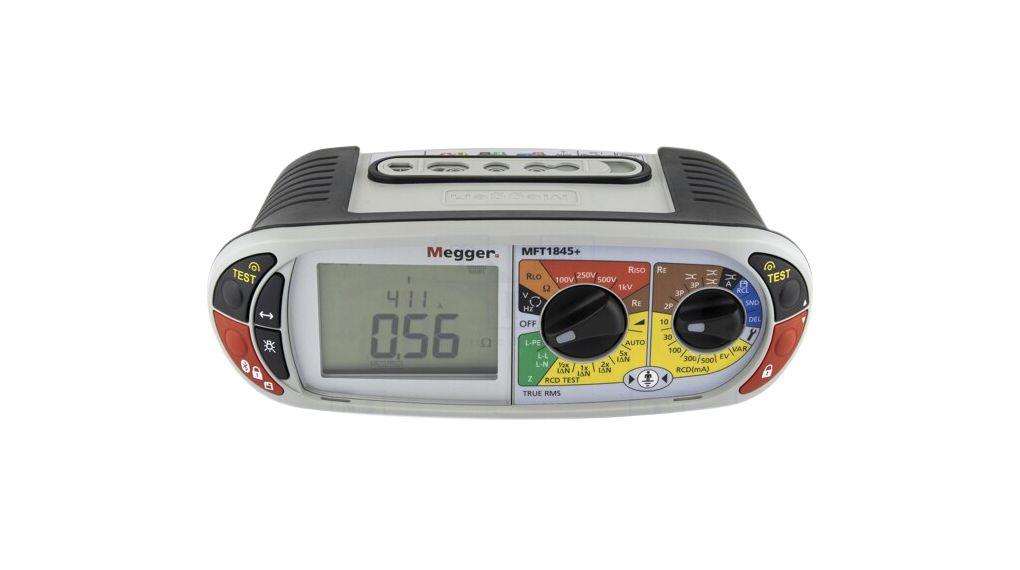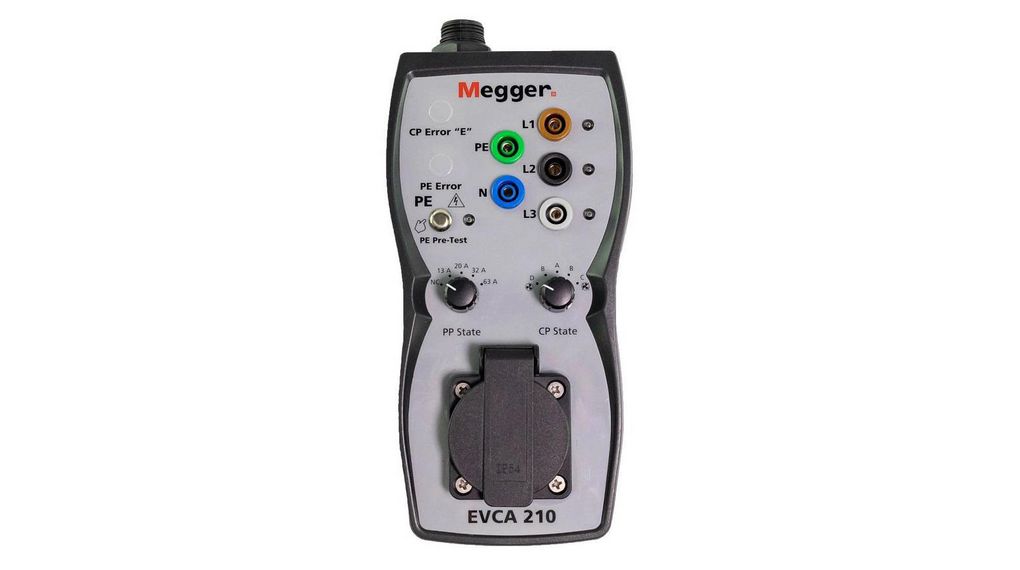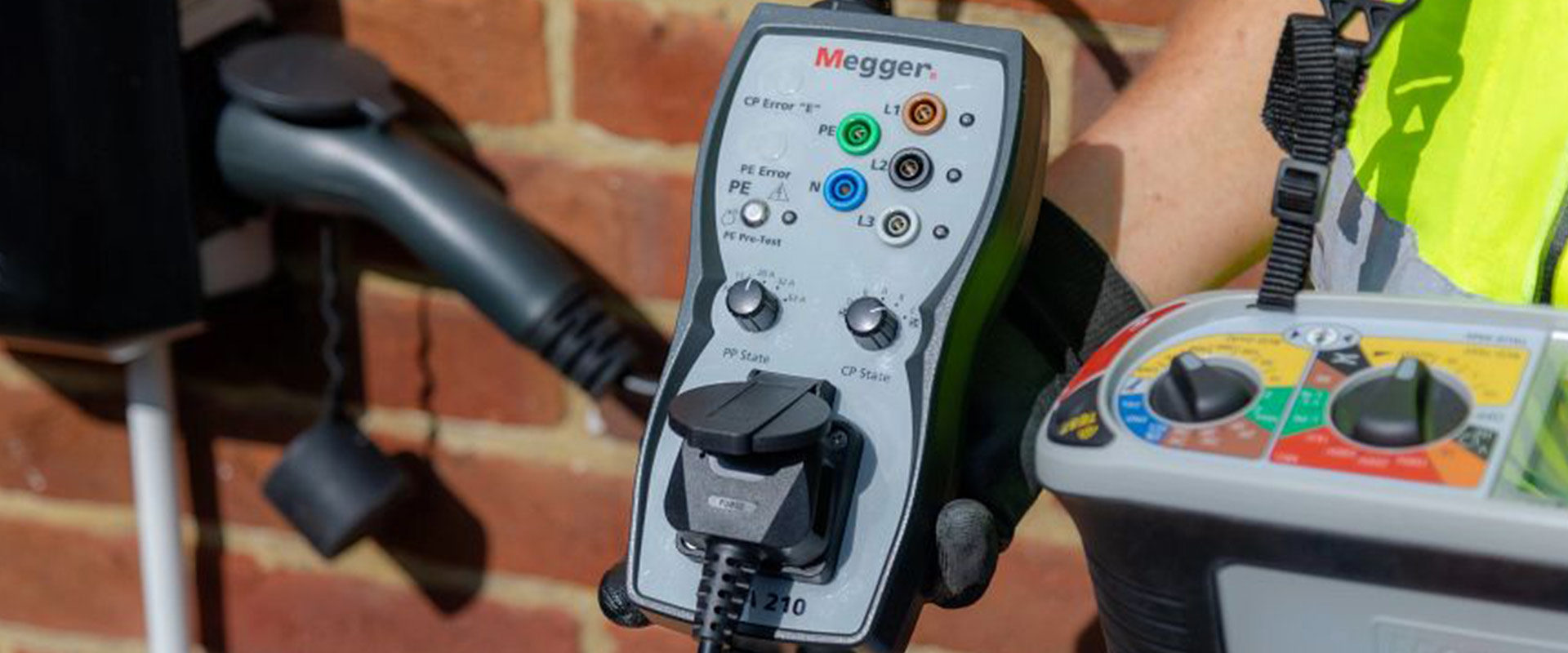
Teresa Külper-Winfield Megger Channel Manager Europe
Teresa has spent all of her career in various technical industries. She has been with Megger for 12 years and currently is the channel manager Europe for Megger‘s LVI/GET segment. Teresa sees great potential in renewables and is proud to work for a company that makes every day work quicker and safer. She is German/American and in her spare time Teresa loves being creative with arts and crafts.
There has been a surge in electric cars, not least thanks to generous support policies by governments. But are charging points always safe or can they be a safety hazard for people and the vehicle itself?
Never before have we been more concerned about protecting the environment than we are today. Thus, the search for more sustainable methods of transport always leads us to e-mobility, which is also a more cost-effective alternative to the conventional combustion engine in the long term. Electric cars are, therefore, in greater demand than ever before, which means that the need for a comprehensive charging infrastructure is also increasing. This is why we find charging points at public parking lots, service stations, at the workplace and at home. Charging points, like every electric system or device in Germany, have to be tested in accordance with DGUV V3, to minimise the risk of vehicle damage or even personal injury during charging. But how do you test the safety of charging stations and wallboxes in accordance with the regulation?
According to DGUV regulation 3 every EV charging station belongs to the electrical installations on which the initial tests in compliance with DIN VDE 0100-0600 and repeat tests according to DIN VDE 0100/0105 must be carried out by the qualified electricians.
EV charging stations and wallboxes are usually connected to the three-phase alternating current with 400 volts, similar to electric stoves with a ceramic hob. They generate a high charging current to achieve maximum charging of the vehicle batteries in the shortest possible time. However, this high permanent load, which usually lasts several hours, can cause faults or overloads in the electrical equipment. This can lead to serious damage to property and/or personal injury caused by electric shock or over-voltages. Therefore, charging equipment must have suitable protective devices which, in the event of faults such as wet contacts, damaged cables, AC / DC faults or even heat generation, prevent people from suffering electrical accidents and the vehicles (or batteries) from being damaged.
According to DGUV 3 EV charging stations – like any other electrical installation – must comply with DIN VDE 0100 and be inspected on a regular basis. In addition, an inspection in accordance with IEC/EN 61851-1 and IEC/HD 60364-7-722 must be carried out to ensure safe operation.
This legally-secure inspection must be carried out by a qualified electrician in accordance with the technical rules of operational safety (TRBS1203).
The qualified person checks the electrical installation before initial commissioning in accordance with DIN VDE 0100-600. Repeat tests must comply with DIN VDE 0105-100. DGUV regulation 3 usually recommends a test interval of one year, but it is ultimately determined by the qualified electrician performing the risk assessment. If these test intervals are not observed, operation of the power supply facility may be prohibited by the regulatory authority. Some manufacturers make initial commissioning with protocol and annual inspection part of their terms and conditions of warranty.
Charging cables are tested in accordance with DIN VDE 0701-0702. Testing is performed with an EV adapter in accordance with the IEC/EN 61851-1 and IEC/HD 60364-7-722 standards, and in combination with suitable installation testers (e.g. Megger MFT1845+) according to VDE0100/0105.

The compact and simple-to use Megger EVCA210 Electric Vehicle Charge-Point Adapter is designed to provide all the functions required to fully test Mode 3 AC electric vehicle charge points. Furthermore, testing of charging stations in accordance with the IEC/EN 61851-1 and IEC/HD 60364-7-722 standards is possible in combination with suitable test equipment (manufacturer-independent). The Megger EVCA210-UK Electric Vehicle Charge-Point Adapter simulates the connection of an electric vehicle to the charging point.
The following technical tests are required:
- Visual inspection in accordance with DIN VDE0100-0600 (initial test) and DIN VDE 0100/0105 (repeat test)
- Continuity of protective conductor PE and equipotential bonding VDE0100-0600 and DIN VDE 0100/0105
- Earth loop impedance testing in compliance with DIN VDE 0100-0600 and DIN VDE 0100/0105
- Testing of the protective devices FI/RCD DIN VDE 0100-0600 and DIN VDE 0100/0105
- Phase sequence (for 3-phase systems)
- Testing of protective measures/shutdown conditions in accordance with VDE 0100-410
- Insulation testing DIN VDE 0100-0600 and DIN VDE 0100/0105
- Testing the shutdown conditions DIN VDE 0100-410
Required functional tests:
- Error handling (earth fault)
- Communication
- Vehicle condition
- Mechanical locking of the plug
- Further tests as required or as recommended by the manufacturer
The mobile emergency charging cable of the electric vehicles should only be used for emergency purposes and not as a permanent solution. They are only intended for charging at conventional, stationary earthed sockets (household socket), if no permanently installed charging device is available. For regular operation, charging at a charging station or permanently installed wallbox is strongly recommended.
Some installation testers can be operated via the front-mounted mains socket, if required, which is connected to L1; N and PE.
A dummy load can also be connected via this socket to check whether any existing power meters in the wallbox/charging pole are displayed correctly.
The 4 mm ports L1, L2, L3, N and PE are used to connect the test leads. Two additional CP signal terminals give the operator the ability to measure the CP signal using an oscilloscope.
In addition, some EV adapters have a manual PE pre-test function that allows the user to check the charging station for dangerous voltages on the PE line before any other test is carried out.
Some adapters also integrate two further manual tests: CP Error – simulates an error on the control pilot circuit; and a PE Error – where a disconnection of the PE circuit is produced. Both tests ensure the correct disconnection of the output of the charging point. Before carrying out testing with this adaptor, it is recommended that the user familiarise themselves with the relevant standards: IEC 61851-1:2017.
The regulations outlined in this article are specific for the German market and may differ slightly in other territories.
Recommended products
MFT1845+ Multifunction Tester

EVCA210 Electric Vehicle Charge Point Adapter












